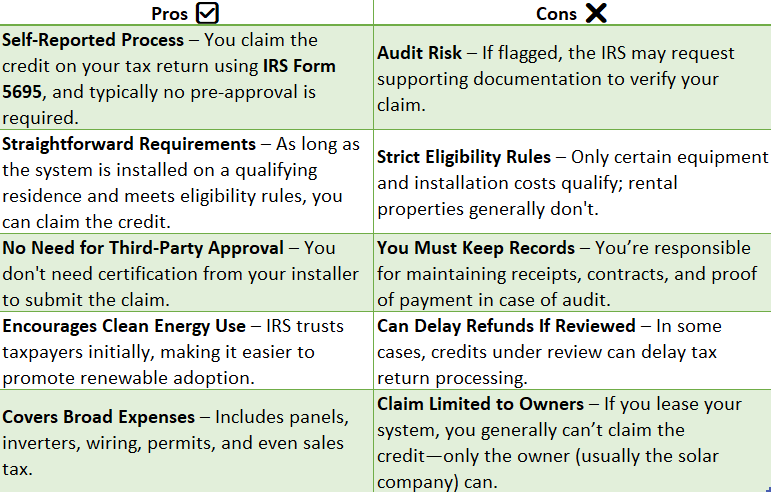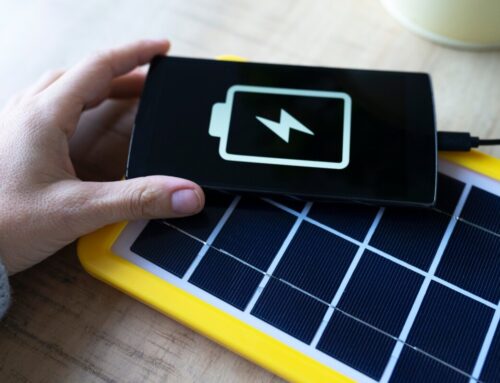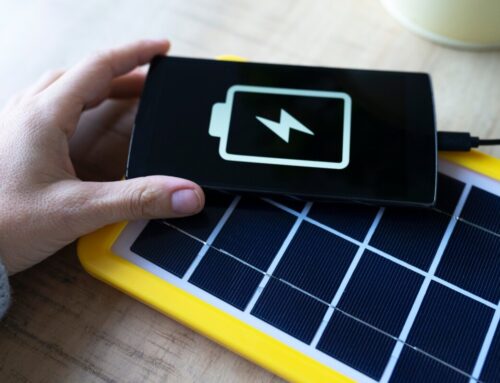IRS Solar Credit Verification Explained
Understanding the IRS Solar Credit Verification Process
Have you ever wondered, how does IRS verify solar credit? If you’re thinking about going solar, it’s important to understand this process. The IRS offers solar tax credits to encourage people to use renewable energy. But, like any tax credit, they need to ensure everything is above board. Let’s dive into how this verification works.
When you claim a solar credit, the IRS doesn’t just take your word for it. They have a system to verify your claim. First, they check the paperwork you submit with your tax return. This includes Form 5695, which details your solar expenses. Make sure you fill it out accurately!
Key Steps in the Verification Process:
- Documentation Review: The IRS examines your receipts and contracts to ensure the solar system is eligible for the credit.
- Cross-Checking: They might compare your claim with other records, like utility bills, to confirm installation.
- Random Audits: Occasionally, the IRS conducts audits to double-check claims. This doesn’t mean you’ve done something wrong; it’s just part of their process.
To make sure your claim goes smoothly, keep all your documents organized. This includes receipts, contracts, and any correspondence with your solar provider. If the IRS has questions, having everything ready will make it easier to respond. Remember, understanding how the IRS verifies solar credit can save you time and stress.
What Documents Do You Need for IRS Solar Credit Verification?
If you’ve installed solar panels, you might be wondering, how does IRS verify solar credit? This is important because it ensures you receive the right tax benefits for your eco-friendly investment. Let’s explore the documents you need to make this process smooth and stress-free.
Proof of Purchase
To start, you’ll need proof that you actually bought the solar panels. This usually means keeping a copy of your receipt or invoice. Make sure it shows the date of purchase, the total cost, and the name of the seller.
Installation Details
Next, the IRS wants to know that your solar panels are up and running. You should have documentation from the company that installed them. This could be a contract or a statement confirming the installation date and location.
Manufacturer’s Certification
The IRS also requires proof that your solar panels meet certain energy efficiency standards. This is where a manufacturer’s certification comes in handy. It’s a document from the manufacturer that confirms your solar panels qualify for the credit.
Form 5695
Finally, when filing your taxes, you’ll need to complete Form 5695. This form helps calculate your solar tax credit and is essential for claiming your benefits. Make sure to fill it out accurately and attach it to your tax return.
By gathering these documents, you can confidently answer the question, how does IRS verify solar credit, and ensure you get the most out of your solar investment.
Common Mistakes to Avoid When Applying for Solar Credits
Applying for solar credits can be a fantastic way to save money and help the environment. However, understanding how the IRS verifies solar credit claims is crucial to ensure your application is successful. Let’s explore some common mistakes to avoid when applying for these credits.
1. Incomplete Documentation
One of the most common mistakes is not providing complete documentation. The IRS needs proof of your solar installation, such as receipts and installation certificates. Without these, they can’t verify your claim. Make sure to keep all paperwork organized and ready to submit.
2. Incorrect Credit Calculation
Calculating your solar credit incorrectly can lead to problems. The IRS verifies solar credit amounts based on the cost of your solar system. Double-check your calculations or consult a tax professional to ensure accuracy.
3. Missing Deadlines
Timing is everything! Missing the deadline for filing your solar credit can result in losing out on the benefit. The IRS has specific timelines, so mark your calendar and file on time to avoid any issues.
4. Not Meeting Eligibility Requirements
Ensure you meet all eligibility requirements before applying. The IRS verifies solar credit eligibility based on factors like the type of property and the installation date. Review these criteria carefully to avoid disqualification.
By avoiding these common mistakes, you can smoothly navigate the process of claiming your solar credits and enjoy the benefits of your eco-friendly investment.

Curious about solar? Let us help you discover how solar energy can revolutionize your home and save you money. Request Your Free Solar Estimate at SOLAR ENERGY
How Does the IRS Verify Solar Credit Claims?
When it comes to claiming solar credits, understanding how the IRS verifies these claims is crucial. Solar credits can significantly reduce your tax bill, making them a popular choice for homeowners investing in renewable energy. But how does the IRS verify solar credit claims to ensure everything is above board?
Documentation is Key
The IRS relies heavily on documentation to verify solar credit claims. Homeowners must provide proof of purchase and installation, including invoices and receipts. This paperwork helps the IRS confirm that the solar system is eligible for the credit and that the installation was completed within the required timeframe.
Cross-Checking with Installers
Another way the IRS verifies claims is by cross-checking information with solar installers. They may contact the company that installed your system to confirm details like the installation date and the type of system used. This step ensures that the claim matches the actual work done.
- Invoices and Receipts: Ensure all documents are clear and legible.
- Installation Date: Verify that the installation falls within the eligible tax year.
- System Details: Confirm that the system meets IRS requirements.
Random Audits
Occasionally, the IRS conducts random audits to ensure compliance. During an audit, they may request additional documentation or clarification on your solar credit claim. While audits can seem daunting, having organized records makes the process smoother and less stressful.
By understanding these verification steps, homeowners can confidently claim their solar credits, knowing they have the necessary documentation to back up their claims.

Maximizing Your Solar Credit: Tips for a Smooth IRS Verification
Switching to solar energy is a fantastic way to save money and help the environment. But did you know that the IRS offers a solar tax credit to make it even more affordable? Understanding how does IRS verify solar credit can ensure you get the most out of this benefit.
Understanding the Solar Credit
The solar tax credit, also known as the Investment Tax Credit (ITC), allows you to deduct a portion of your solar costs from your taxes. But how does IRS verify solar credit? They check your paperwork to ensure everything matches up. This means having all your documents in order is crucial.
Key Documents to Prepare
To make the verification process smooth, keep these documents handy:
- Receipts and Invoices: Show the total cost of your solar system.
- Installation Date: Prove when your system was installed.
- Proof of Payment: Confirm you paid for the system.
Tips for a Hassle-Free Verification
- Double-check your paperwork: Ensure all information is accurate.
- Consult a tax professional: They can guide you through the process.
- Stay organized: Keep all documents in one place for easy access.
By understanding how does IRS verify solar credit, you can confidently claim your solar tax credit and enjoy the benefits of clean energy without any hiccups. Remember, preparation is key to maximizing your savings!
The Role of Professional Assistance in Navigating IRS Solar Credit Verification
Understanding how the IRS verifies solar credit is crucial for anyone looking to benefit from solar energy incentives. The process can be complex, and having professional guidance can make a significant difference in ensuring everything is done correctly.
Why Professional Help Matters
- Expertise in Tax Regulations: Tax professionals are well-versed in the latest IRS guidelines and can help you understand how the IRS verifies solar credit.
- Accurate Documentation: They ensure all necessary documents are correctly filled out and submitted, reducing the risk of errors.
Steps in the Verification Process
- Gathering Documentation: Professionals help collect all required documents, such as receipts and installation certificates.
- Filing the Right Forms: They assist in completing forms like Form 5695, which is essential for claiming solar credits.
- Responding to IRS Queries: If the IRS has questions, professionals can handle communications, ensuring accurate and timely responses.
Benefits of Professional Assistance
- Peace of Mind: Knowing that experts are handling your solar credit claim can alleviate stress.
- Maximized Credits: Professionals ensure you claim the maximum credit available, optimizing your financial benefits.
In conclusion, while understanding how the IRS verifies solar credit is important, having professional assistance can simplify the process, ensuring you receive the full benefits of your solar investment.
How SolarEnergy Can Simplify Your IRS Solar Credit Verification
Ever wondered how does IRS verify solar credit? It’s a question many homeowners ask when they decide to go green. Understanding this process is crucial because it ensures you receive the financial benefits you’re entitled to when you install solar panels. Let’s dive into how SolarEnergy can make this process a breeze for you.
Understanding the Verification Process
When you claim a solar credit, the IRS needs to verify your eligibility. They check your tax forms and the documentation you provide about your solar installation. This might sound complicated, but don’t worry! SolarEnergy is here to guide you every step of the way.
How SolarEnergy Assists You
- Expert Guidance: Our team helps you gather all necessary documents, ensuring nothing is missed.
- Streamlined Process: We simplify the submission process, so you can focus on enjoying your solar savings.
- Peace of Mind: With our support, you can rest easy knowing your claim is accurate and complete.
Why Choose SolarEnergy?
Choosing SolarEnergy means choosing a partner who understands the ins and outs of solar credit verification. We make sure you know exactly how does IRS verify solar credit and help you navigate the process with ease. With us, you’re not just another customer; you’re part of a community committed to a sustainable future.
FAQ
-
What documents does the IRS require for the solar tax credit?
You need receipts, contracts, and Form 5695 filed with your federal tax return to claim the Residential Clean Energy Credit. -
Does the IRS require proof of solar panel installation?
Yes, the IRS may request proof like installation invoices, payment confirmations, and dates of service to verify the system is operational. -
Can the IRS audit a solar tax credit claim?
Yes, the IRS can audit your claim and may ask for detailed records to confirm eligibility and accuracy. -
Is a manufacturer certificate necessary for claiming the credit?
It’s not always required to attach it, but keeping a copy of the manufacturer’s certification that panels meet IRS standards is recommended. -
How long should I keep my solar credit documentation?
Keep all relevant documents for at least 3 years after filing, in case of an IRS review or audit.
Don’t wait to go solar! Thousands of homeowners are saving—join them and start reaping the benefits.
Book Your Free Consultation at SOLAR ENERGY
Explore additional solar solutions at NEW SOLAR QUOTES and discover how it can benefit your home!









